How did we get here? A timeline of growing tensions between the US and Iran
What led up to the military strikes between the U.S. and Iran?
During his 2016 presidential campaign, Donald Trump repeatedly blasted the Iran nuclear deal, one of former President Barack Obama's key foreign policy achievements.
In May 2018, as president, he announced he would be formally pulling the U.S. out of the deal, which granted Iran sanctions relief and returning frozen assets to Iran in exchange for restrictions on its nuclear program and international inspections.
Since then, tensions between the countries have continued to escalate, leading to Iran launching ballistic missiles at U.S. forces in Iraq on Tuesday.
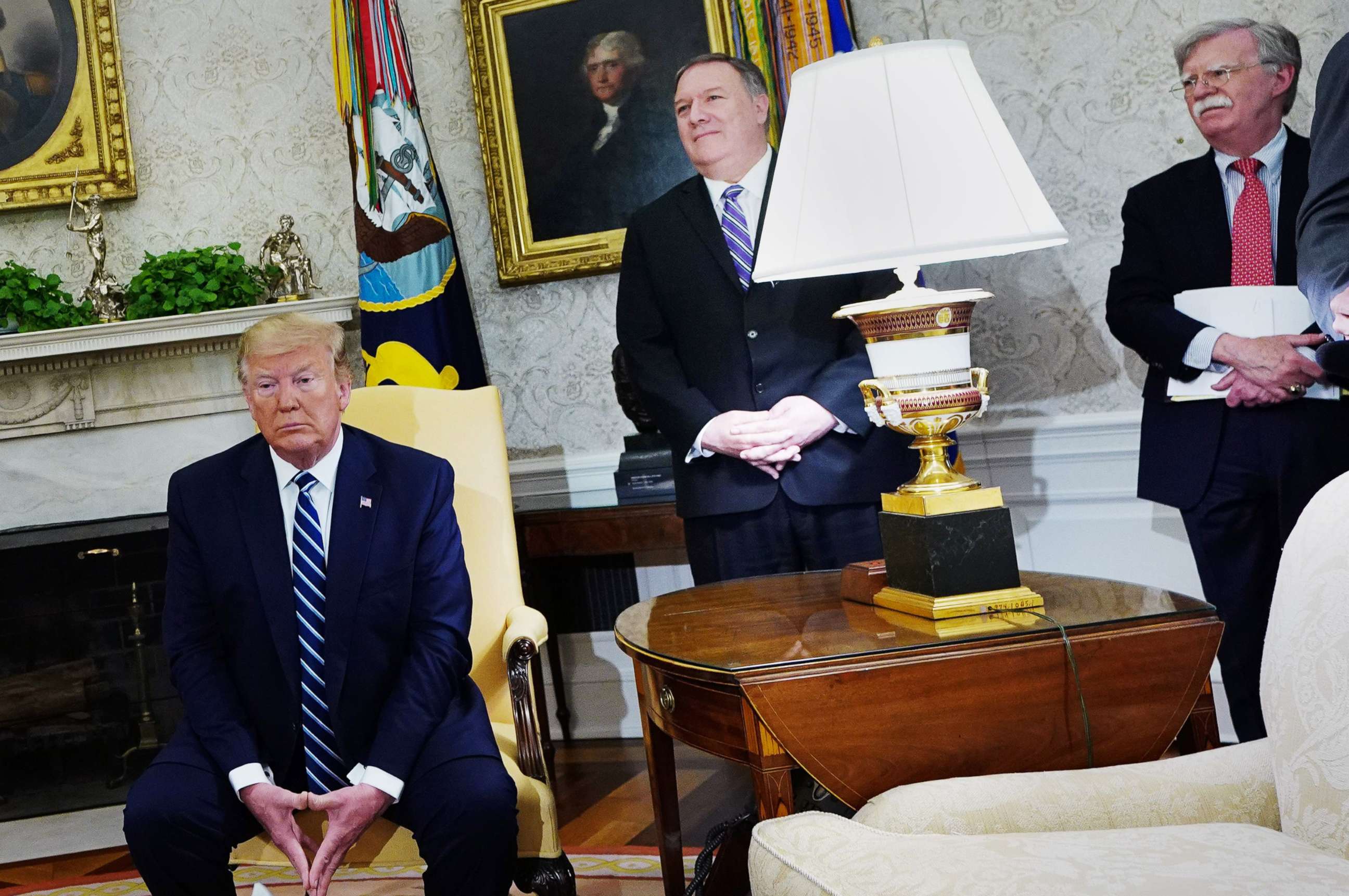
Trump has said he does not seek war with Iran. But with conflicting signals coming from his advisers and military movements in the region, a key question is whether rising tensions could turn into an all-out war.
To review how we got to this point, here's a look back at the recent back-and-forth between the U.S. and Iran:
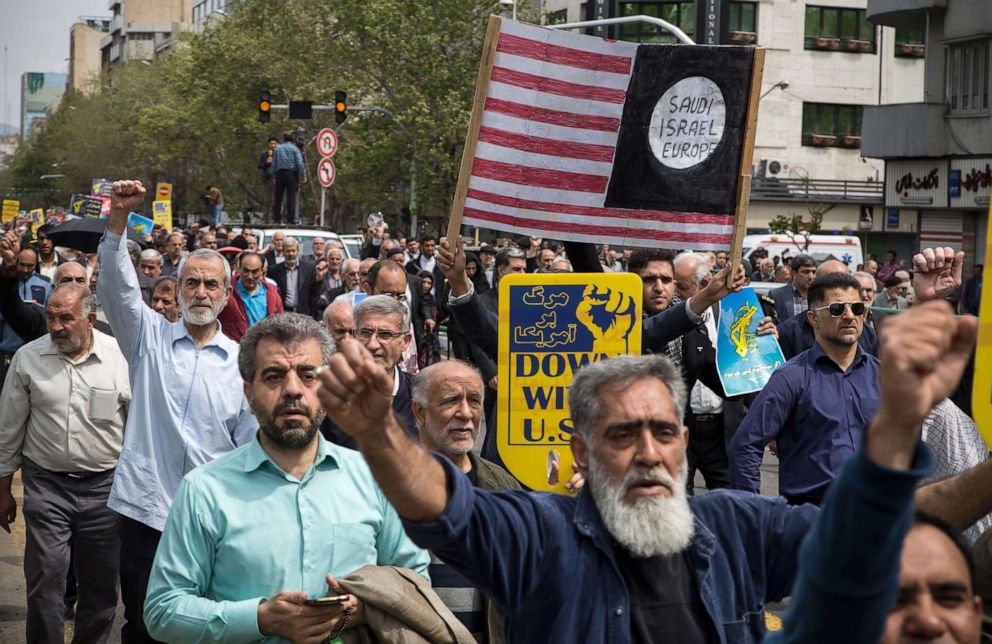
April 8, 2019: Trump administration designates Iran's Islamic Revolutionary Guard Corps a 'foreign terrorist organization'
President Trump moved to designate Iran's Islamic Revolutionary Guard Corps, a wing of the Iranian military, as a foreign terrorist organization.
The designation was significant and controversial as it was the first time that the U.S. has officially identified a branch of a foreign state as a terrorist organization.
April 22, 2019: US ends waivers for Iran oil sanctions
The United States announced that it would no longer grant any waivers to countries to purchase Iranian oil, fully implementing the sanctions that President Trump reimposed in November as part of a "maximum pressure" campaign against Tehran.
May 5, 2019: Aircraft carrier sent to Middle East after indications Iran planned attack on US forces
The United States deployed an aircraft carrier strike group ahead of schedule, as well as a bomber task force to the Middle East in response to "clear indications" Iran and Iranian proxies were planning an attack on U.S. forces in the region, U.S. officials said.
A statement from national security adviser John Bolton said the deployments were intended "to send a clear and unmistakable message to the Iranian regime that any attack on United States interests or on those of our allies will be met with unrelenting force."
May 8, 2019: US imposes new sanctions on Iran's metal industries and Iran threatens to break the nuclear deal
The new executive order, signed by the president, authorized sanctions on Iranian iron, steel, aluminum, and copper sectors, which the White House said comprise 10 percent of Iran's export economy. The sanctions could also target financial institutions or foreign countries that facilitate Iran's export of those goods.
One that same day, Iran warned the nuclear deal's remaining signatories that it would stop implementing parts of the agreement if they don't improve economic cooperation with the country. In a televised address, Iranian President Hassan Rouhani said Wednesday that China, Russia, and those European powers have 60 days to improve economic ties with Iran or it will keep its excess enriched uranium and heavy water instead of shipping them overseas -- two requirements of the deal.
May 10, 2019: Pentagon deploys Patriot anti-missile battery to Middle East
The Pentagon announced that the U.S. military is deploying a Patriot anti-missile battery to the Middle East to further deter threats from Iran.
May 12, 2019: Iran or Iranian-backed proxies placed explosive charges the four ships
The initial assessment by a U.S. military team sent to assist the UAE is that Iran or Iranian-backed proxies placed explosive charges on the four vessels anchored off the coast of the United Arab Emirates, a U.S. official told ABC News. The official said each ship sustained a 5- to 10-foot hole at or below the water line.
May 24, 2019: More troops headed to the Middle East
An additional 1,500 U.S. troops and increased defensive capabilities are being sent to the Middle East to continue to help deter Iran, the Pentagon announced.
U.S. officials said the Iranian threat to U.S. forces continues even as Iran has pulled back some weapons systems. Two U.S. officials said that Iran has removed cruise missiles from two of the civilian shows that the Pentagon described as posing a risk to U.S. Navy ships, commercial ships and land targets.
June 2, 2019: Iran's Foreign Minister Javad Zarif says US sanctions are 'economic terrorism'
In an exclusive interview, Iranian Foreign Minister Javad Zarif told "This Week" Co-Anchor Martha Raddatz that "there will be consequences" if the United States keeps up its economic pressure campaign against Iran’s people.
Zarif labeled the new U.S. sanctions as "economic terrorism" that "targets ordinary Iranian people" because even though food and medicine are exempted from the sanctions, the financial transactions associated with them are not.
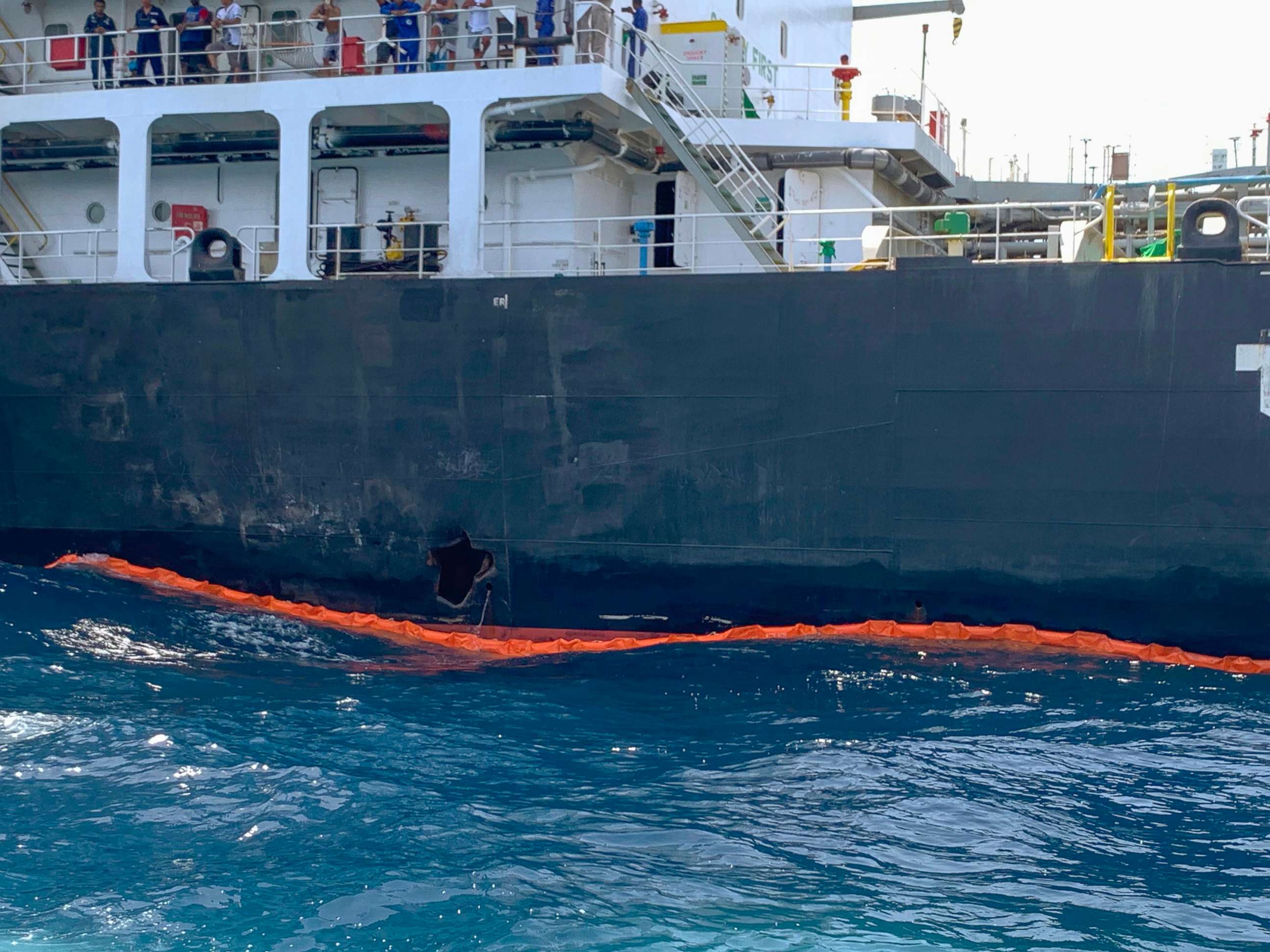
June 13, 2019: Two oil tankers attacked in the Gulf of Oman and Iran's Ayatollah Khamenei rejects Trump's offer to talk
Secretary of State Mike Pompeo blamed Iran for the attack on two commercial tankers sailing in international waters in the Gulf of Oman.
"The Department of Defense continues to closely monitor the activities of the Iranian regime, their military and proxies," the Pentagon said in a statement, adding, "The United States does not seek conflict with Iran, but we are postured and ready to defend U.S. forces and interests in the region."
On the same day, Iran's supreme leader said he has rejected an offer from President Trump to talk, blasting the U.S. as insincere in its offer and untrustworthy.
"I do not consider Trump as a person worth exchanging any message with," Ayatollah Khamenei reportedly said.
June 17, 2019: Iran said that is was within 10 days of violating 2015 containment deal and then US announces deployment of additional troops to the Middle East
An Iranian atomic agency spokesman said that the country will break its uranium stockpile limit set by nuclear deal in 10 days.
Later in the day, the U.S. said it was sending 1,000 additional troops to the Middle East, amid rising tensions between the U.S. and Iran.
"In response to a request from the U.S. Central Command (CENTCOM) for additional forces, and with the advice of the Chairman of the Joint Chiefs of Staff and in consultation with the White House, I have authorized approximately 1,000 additional troops for defensive purposes to address air, naval, and ground-based threats in the Middle East," acting Defense Secretary Patrick Shanahan said in a statement.
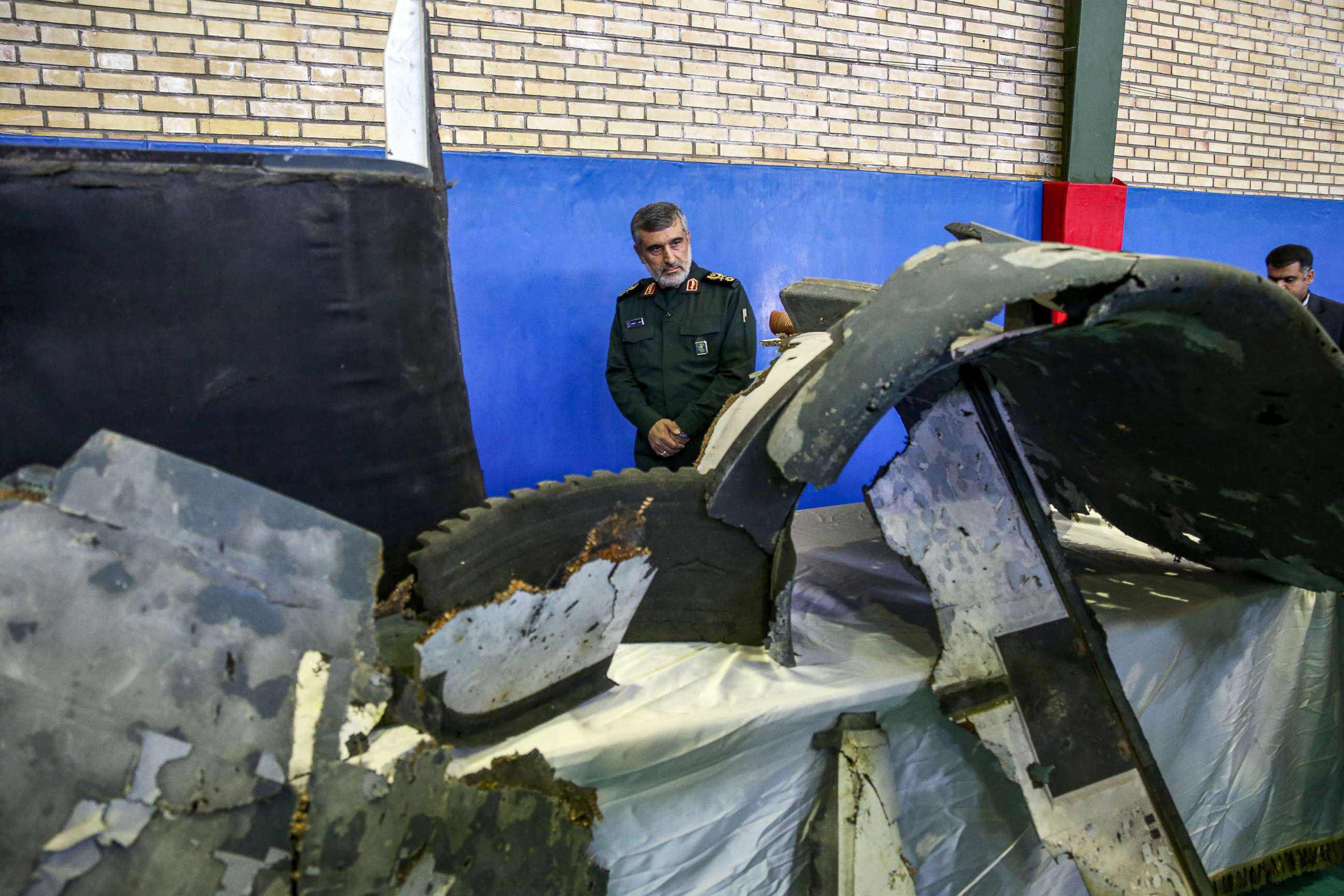
June 20, 2019: Iran shoots down a US drone
Iran, in what appeared to have been a major provocation, shot down what the U.S. military said was an unarmed and unmanned $130 million U.S. RQ-4A Global Hawk drone flying in international airspace over the Gulf of Oman near the Strait of Hormuz
Iran maintained that the American drone violated its airspace. Gen. Hossein Salami, commander of Iran's Islamic Revolutionary Guard Corps, offered a strongly worded threat to the U.S. after the drone was downed.
"Shooting down the American spy drone had a clear, decisive, firm and accurate message," he said, translated from Farsi. "The message is that the guardians of the borders of Islamic Iran will decisively respond to the violation of any stranger to this land. The only solution for the enemies is to respect the territorial integrity and national interests of Iran."
Trump said that the Iranian's shooting down an American drone may have not been intentional, but a "mistake" by someone "loose and stupid."
He ordered a military strike on Iran late the same day, but reversed his decision after a plan was already underway, tweeting the next day he did so because he was concerned about the potential for casualties.
June 24, 2019: Trump announces new sanctions on Iran
Trump signed an executive order imposing new "hard-hitting" sanctions on Iran, including on Ayatollah Khamenei.
He said that while the U.S. "does not seek conflict with Iran," the sanctions "will deny the supreme leader and the supreme leader's office and those closely affiliated with him and the office access to key resources and support."
The order, Trump said, was the culmination of a series of "aggressive behaviors" by the regime in recent weeks, including the shooting down of a U.S. drone. In addition to Ayatollah Khamenei, it affected eight senior commanders of Navy, Aerospace and Ground Forces of the Islamic Revolutionary Guards Corps, known as the IRGC, which is suspected of carrying out multiple attacks in the Strait of Hormuz, one of the most important waterways in the world.
July 31, 2019: Iran criticizes additional sanctions of its foreign minister
About a month after Trump announced the new "hard-hitting" sanctions on Iran's supreme leader, his administration announced it was sanctioning Zarif, for acting as a "propaganda minister" on behalf of Rouhani.
Rouhani called the sanctions "childish behavior," according to the Iranian official news agency IRNA. On Twitter, Rouhani defended Zarif, saying he "heads Islamic Republic's diplomacy & ably talks & negotiates on behalf of the entire nation."
Sept. 6, 2019: US-Iran diplomatic deal hangs in balance as Tehran breaches new nuclear limit
Iran broke another commitment under the nuclear deal -- meant to provide sanctions relief and economic benefits in exchange for limits to its nuclear program.
The move came as the country struggled under the new sanctions posed by the United States. Iran began working on advanced centrifuges that would allow the country to speed up its enrichment, according to state run news agency IRNA, a breach of the commitment made under the nuclear deal.
The breach followed two previous actions -- stockpiling a greater amount of enriched uranium above 300 kilograms and enriching uranium above 3.67%, the limits set by the accord.
Zarif defended the decision as a necessary response to U.S. "economic terrorism" and an effort to pressure Europe to provide more economic relief from U.S. sanctions.
Sept. 23, 2019: Trump calls for new Iran deal, but Iran calls for sanctions lift
A year and a half after pulling the U.S. out of the Iran nuclear deal, Trump said he was ready for a new agreement.
Rouhani was less inclined to such a move, saying there would be no negotiations until Trump eased or lifted the sanctions, which the U.S. agreed to do under the original deal.
Nov. 5, 2019: Iran announces government will inject uranium gas into centrifuges
Rouhani said the government would inject uranium gas into centrifuges at its underground nuclear facility at Fordo, another step away from the nuclear deal that would allow the facility to produce enriched uranium, which can fuel nuclear reactors or nuclear weapons.
The move was considered at the time the most provocative yet, with a former Obama administration lead sanctions expert calling it "a very big, troubling step" that "will definitely raise temperatures in the region."
Dec. 13, 2019: Pompeo offers stark warning to Iran
Secretary of State Mike Pompeo issued a stark statement, saying any attack on a U.S. base by Iran or its proxies that “harm Americans, our allies, or our interests will be answered with a decisive U.S. response."
Critics condemned the sanctions as a barrier to diplomacy, but the White House argued if the U.S. wanted to speak with Iran, it would now talk to
Dec. 27, 2019: Rocket attack at military base in Iraq kills US civilian contractor, wounds several service members
One U.S. civilian contractor was killed and several service members were wounded in a rocket attack that targeted a military base in northern Iraq, according to the U.S. military.
No group claimed responsibility for the attack at Iraq's K1 military base -- which houses U.S. and coalition forces.
Dec. 29, 2019: US airstrikes hit Iranian-backed group in Iraq
Multiple U.S. F-15s conducted strikes against an Iranian-backed group in Iraq and Syria.
Five facilities tied to Kata'ib Hizbollah (KH), including a KH weapon storage facilities as well as command and control locations the group used to plan and execute attacks on U.S. and coalition troops, were hit, according to a statement from chief Pentagon spokesperson Jonathan Hoffman.
The Pentagon said KH was linked to Iran’s Quds Force and was responsible for recent attacks in Iraq, including the one two days before that killed a U.S. civilian contractor and injured several American and Iraqi forces.
Twenty-five of the groups fighters were killed and dozens more were wounded, according to The Associated Press.
When a senior State Department official was asked by reporters if there were concerns over retaliations by Iran or its proxies, the official said "We don't have any fears."
Dec. 31, 2019: Protesters attack US Embassy in Baghdad in response to US airstrikes
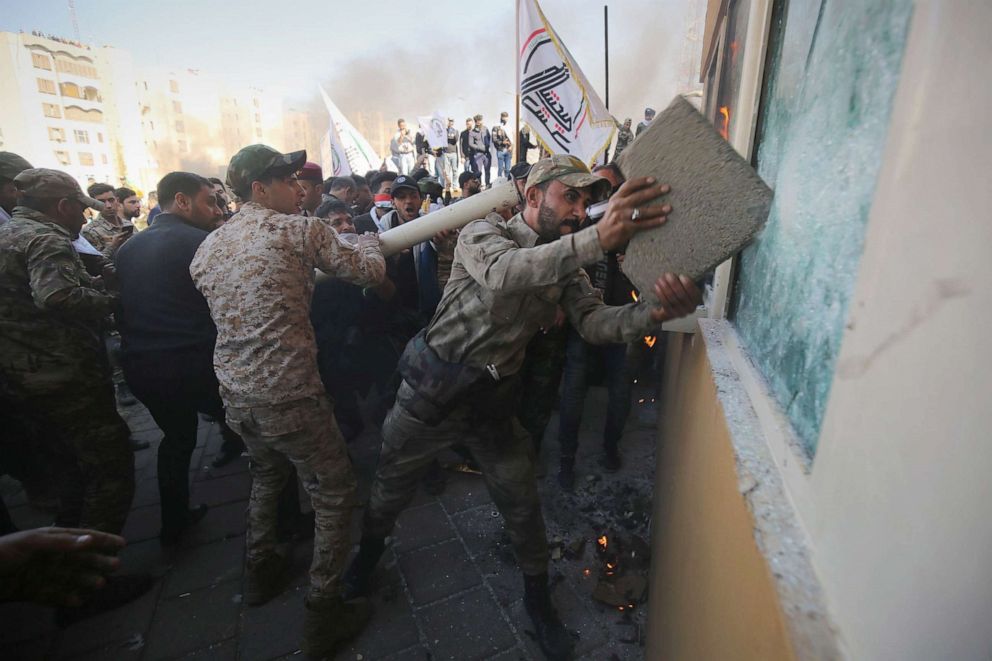
Hundreds of protesters attempted to storm the U.S. Embassy in Baghdad in the wake of the U.S. airstrikes that killed fighters from the pro-Iranian militia Kata'ib Hezbollah, with many chanting "Down, down USA."
The protesters managed to make it past an outer wall right up to the embassy gates, with Iraqi security forces reportedly not intervening until after U.S. forces used non-lethal means to repel the attack, according to a law enforcement source.
During the violent episode, which came after funerals for the fighters, protesters could be seen waving yellow militia flags outside the compound.
In response, an infantry battalion of about 750 soldiers from the U.S.'s 82nd Airborne Division was authorized to deploy to the Middle East "immediately," according to a statement from Defense Secretary Mark Esper.
Jan. 2, 2020: Soleimani is killed at direction of Trump
Gen. Qassem Soleimani, the leader of Iran’s Quds Force, was killed in a U.S. airstrike in Baghdad, a dramatic escalation to already boiling tensions.
The White House said the attack was done "at the direction of the President."
Trump, about 24 hours after the strike, defended his order and said Soleimani was “plotting imminent and sinister attacks" on American diplomats and military personnel.
Iran’s Ayatollah Khamenei vowed for "vigorous vengeance."
"His pure blood was shed by the hands of the cruelest of the mankind on the earth," Khamenei said in a statement.
Iraqi militia commander Abu Mahdi al-Muhandis also died in the airstrike, Ahmed al-Assadi, a spokesman for Iraq's Popular Mobilization Forces, confirmed to ABC News.
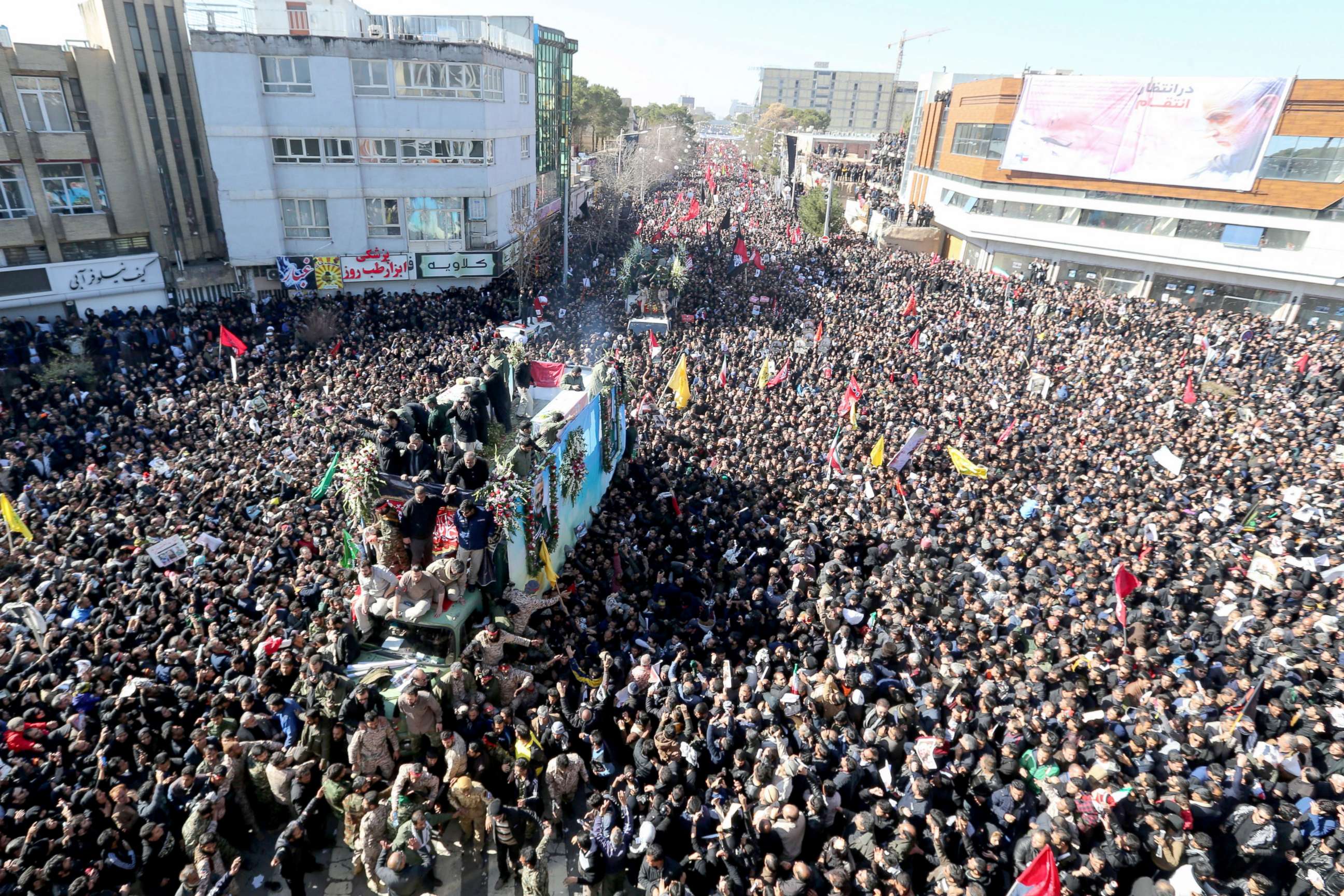
Jan. 7, 2020: Missiles from Iran target US military facilities in Iraq
Iran launched multiple missiles that targeted American military facilities in Iraq, according to a U.S. official.
The facilities hit on Wednesday morning local time were in Erbil in northern Iraq and Al Asad Air Base in western Iraq, the official said.
There were no U.S. or Iraqi casualties and the damage was minimal, according to a statement from President Trump.
Jan. 8, 2020: Trump responds to missile attack, says Iran 'appears to be standing down'
President Trump struck a diplomatic but firm tone following the attacks, in what appeared to be a de-escalation of tensions.
Trump said that while "Iran appears to be standing down," the U.S. will impose new sanctions on the country "until Iran changes its behavior."
"For far too long, all the way back to 1979, to be exact, nations have tolerated Iran's destructive and destabilizing behavior in the Middle East and beyond," Trump said in his address to the nation, appearing to reference the 444-day hostage crisis at the U.S. Embassy in Tehran in 1979. "Those days are over. Iran has been the leading sponsor of terrorism and their pursuit of nuclear weapons threatens the civilized world. We will never let that happen."
Trump did not detail the new economic sanctions, but called them "powerful."
Later that day, both Switzerland and Oman's governments announced that the U.S. and Iran have been passing messages through the countries, which have served as the traditional intermediaries.
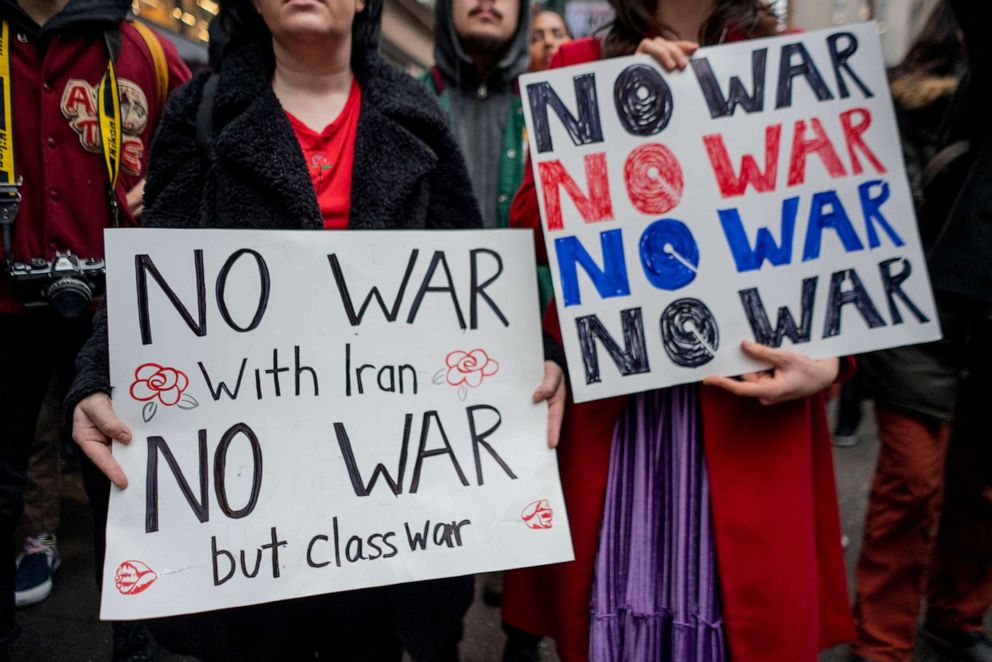
Omani officials have declined to detail specifics of the messages and have only described them as attempts to reduce tensions. The Swiss foreign ministry told ABC News in a statement that it has transmitted "several messages" through its channel in recent days, but a spokesperson also declined to offer specifics.
ABC News' Elizabeth McLaughlin and Ben Gittleson contributed to this report.




